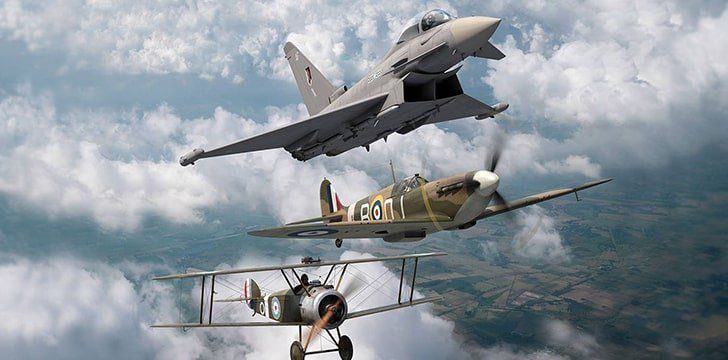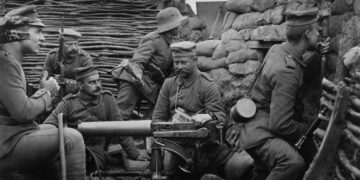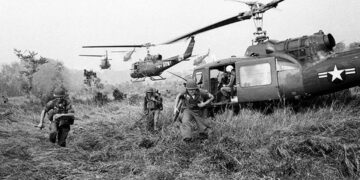World War II saw history’s first-ever major aerial-only campaign of war with the Battle of Britain.
During this time, the outnumbered RAF held off wave after wave of German Luftwaffe fighter and bomber planes.
It was during the Battle of Britain that many British flying aces were made.
After the fall of mainland Europe, Britain stood almost alone against the overwhelming power of the Axis forces.
Among the British flying aces of the RAF was one man named Douglas Bader.
Bader was unique from any other pilot in that he had a significant disability: he had no legs.
However, as Bader and other pilots would come to see, his disability was less a hindrance and more an advantage.
Joining the RAF and Losing His Legs
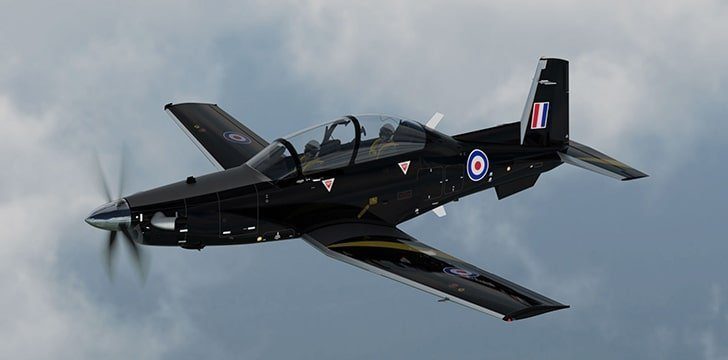
Douglas Bader joined the RAF in 1928 and graduated from the flying academy in 1930.
At age 21, Bader was assigned to a squadron at Woodley Airfield in Reading where he flew Bristol Bulldog biplanes.
Whilst on a practice flight, Bader went against his Commander’s orders to perform acrobatics and to not fly under 2,000 feet.
He tried pulling a stunt to show off his skills but his Bulldog slammed into the ground.
Both of Bader’s legs were trapped and crushed under the mangled and twisted wood, canvas, and metal of his plane.
With no way of saving them, Bader’s legs were amputated. One above the knee, and one below the knee.
Bader’s doctors were not hopeful that he would ever be able to walk again without a stick.
Determination, Perseverance, and A Second Chance
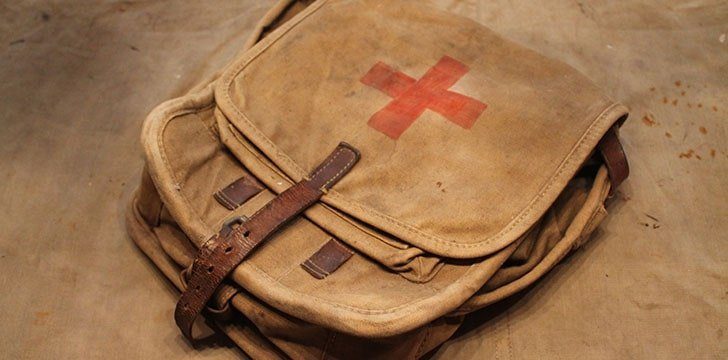
Being fitted with some artificial legs and transferred to RAF Uxbridge, Bader was determined to prove his physicians wrong. After all, he wanted to fly again.
During his time at RAF Uxbridge, Bader learned to drive a specially modified racing car, play golf and tennis, and even learned how to dance.
It was also during his time at RAF Uxbridge that Bader would meet Thelma Edwards – the lady who he would fall in love with and go on to marry.
In June 1932, Bader was given a chance to try and fly again by Air Under-Secretary Philip Sassoon.
Sassoon had arranged for Bader to take up an Avro 504, which he did very competently, and a subsequent medical examination proved him fit for active service.
However, the RAF, much to Bader’s dismay, reversed their decision in April 1933, on the grounds that he was not covered by the King’s Regulations.
In May that year, Bader was signed out of the RAF and took a desk job at the oil company now-known as Shell.
Rising Tensions and Repeated Requests
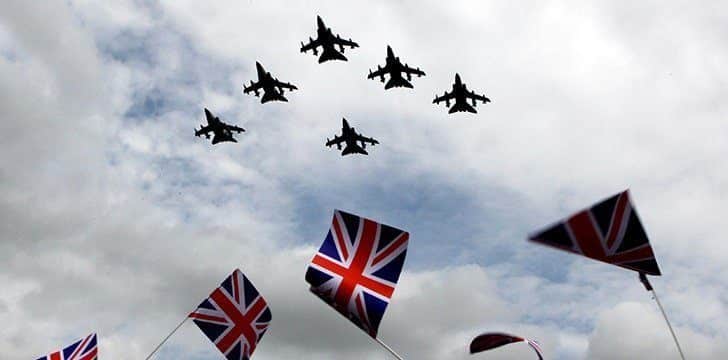
As tensions continued to rise in Europe between 1937 and 1939, Bader repeatedly requested to re-join the RAF.
Despite being allowed to re-join the RAF, he was only given a “ground job” as the heads of the RAF believed they could not accommodate his disability in a piloting role.
Air Vice Marshall Halahan, commandant of RAF Cranwell during Bader’s days there, personally suggested Bader be allowed to enter the Central Flying School to test his abilities.
During his training, Bader couldn’t help but do a risky stunt in his Avro tutor plane. He turned the biplane upside down at 600 feet, and was able to keep the plane stable and avoid a crash like the one which had cost him his legs all those years ago.
Bader passed through the academy with flying colors, and it also granted him the opportunity to familiarize himself with the new model of fighters.
Gone were the biplanes of Bader’s day, replaced by the significantly upgraded low-wing monoplanes like the Hawker Hurricane and the Supermarine Spitfire.
It was in these planes that Bader’s reputation as an ace pilot would be forged.
The Phony War and the Battle of France
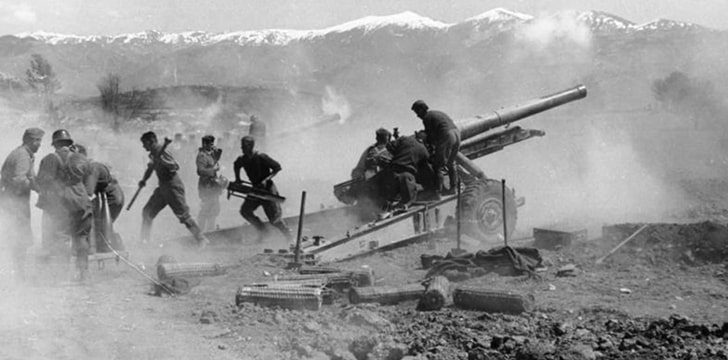
In 1940, Bader was posted to the No. 19 Squadron, and put in the cockpit of a Spitfire.
During his time in No. 19 Squadron, Bader mainly undertook convoy patrol missions during the Phony War and didn’t see much action at all.
However, he was later transferred to No. 222 Squadron, where he saw action over the Battle of France and the Dunkirk Evacuations (Operation Dynamo).
Bader helped protect the British Navy as it evacuated the 300,000+ besieged soldiers from French beaches.
During the Battle of France, Bader was accredited with taking down one Messerschmitt Bf 110, damaging another, and also damaging a Heinkel He 111 bomber.
After the Battle of France and Operation Dynamo, Bader was transferred to No. 242 Squadron as Commanding Officer.
This was a Hawker Hurricane squadron made up of mostly Canadian pilots who had suffered high losses during the Battle of France and were very low in morale.
Leading the No. 242 Squadron and Bader’s Distinct Advantage
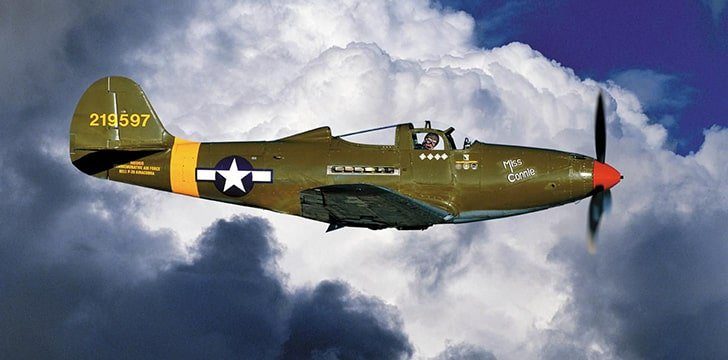
After his initial transfer, Bader’s No. 242 Squadron was not very welcoming of their new commander.
They were puzzled by his disability and why he was allowed to serve, let alone lead.
However, as Bader had started to realize, his disability was a fantastic advantage for any fighter pilot to have.
When performing sharp turns in a fighter plane, pilots experience increased G-Forces pushing down on them.
If a pilot experiences too much G-Force, they can blackout and lose consciousness.
This is because the blood rushes from the pilot’s brain and into other parts of their bodies, like their legs. However, Bader had no legs.
Due to this, the effects of the G-Force made him less likely to blackout, and Bader was able to pull tighter turns and sharper maneuvers, being able to easily outfly his non-handicapped opponents.
The Battle of Britain
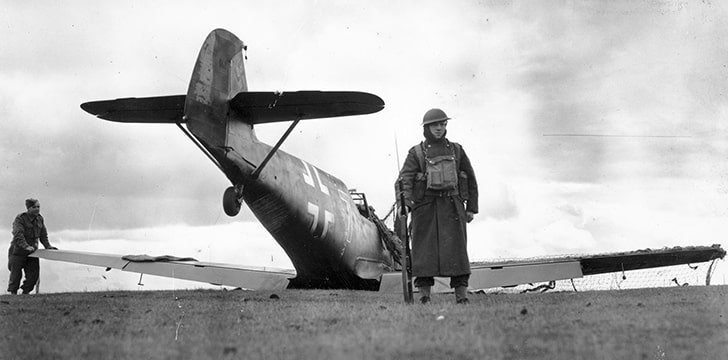
With Hitler and the Axis kicking into effect the first phase of Operation Sea Lion, the Luftwaffe attempted to establish aerial superiority over Britain in advance of a ground invasion.
This period of time, between June and October 1940, would become known as the Battle of Britain. This was the first major prolonged aerial-only conflict in history.
Bader led his squadron in a number of combat sorties over Britain, inspiring them with his own courage and skill, rebuilding the unit’s morale and turning them into a formidable fighting force.
No. 242 Squadron saw fierce action throughout the entire Battle of Britain. They became a renowned fighting force, with Bader earning the respect of his superiors and men alike.
On August 30, 1940, they engaged in their biggest fight of the battle, flying against a large Luftwaffe force of bombers and fighters.
No. 242 Squadron took down 12 planes in total with two of them being taken down by Bader himself.
By late 1940, with the Battle of Britain drawing to a close, Bader’s squadron had 65 confirmed kills for only 5 losses. Bader, by this point, had scored well over 5 kills and was classed as an ace pilot.
He received the Distinguished Service Order on September 14, 1940.
Battle of Britain Day
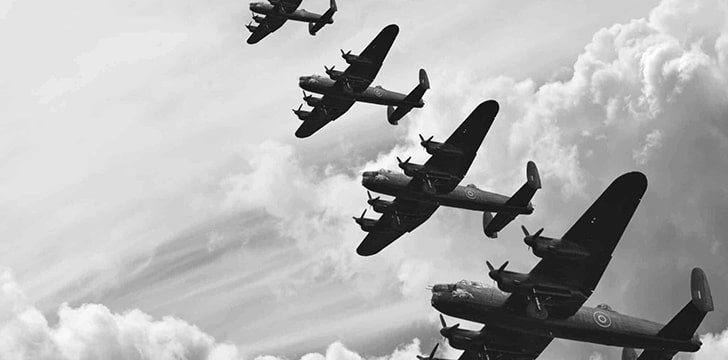
On September 15, 1940, the Luftwaffe launched an all-out attack on London.
It lasted from dawn until dusk and over 1,500 German aircraft sortied over the skies of Britain that day.
Bader flew several different missions that day, one after the other, all full of heavy air combat. He shot down a Dornier Do 17 bomber, damaged another, and also damaged a Junker Ju 88 bomber during the battle.
Before the end of September, Bader had been promoted to the rank of Flight Lieutenant, and by December 1940 he was awarded the Distinguished Flying Cross for his services during the Battle of Britain.
Wing Leader
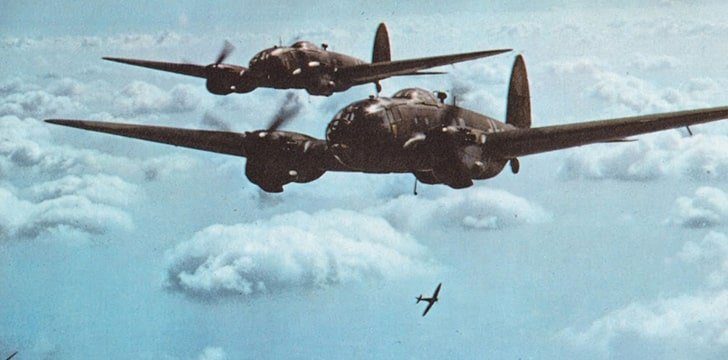
On March 18, 1941, Bader was promoted to acting Wing Commander and became one of the RAF’s first “Wing Leaders.”
With three squadrons now under his command, Bader led his Spitfires on sweeps and escort missions over Europe and the British Channel during the summer campaign of 1941.
As Wing Leader, Bader was allowed the perk of having his initials painted on the side of his fighter. “D-B” adorned his Spitfire’s nose, and because of this he got the call sign “Dogsbody.”
Over the summer campaign, Bader shot down over 10 more aircraft, bringing his total to over 20 downed aircraft throughout the war.
Last Flight
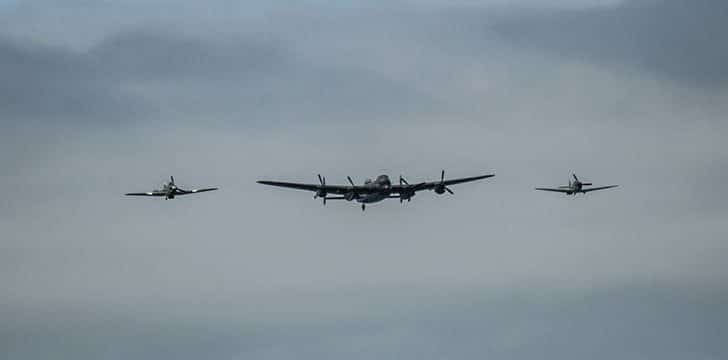
On August 9, 1941, Bader and four other Spitfires were flying an offensive patrol over the English Channel when he spotted twelve Messerschmitt Bf 109 fighters flying below and towards them.
Bader turned to face them and dived in steep on the enemy formation.
Having dived in too quickly, Bader realized he had lost his squadron and considered turning home back over the Channel.
However, he caught sight of three pairs of Bf 109s flying below and in front of him.
He closed in on them and destroyed one with a quick burst of fire, before firing on and taking down the second one.
As the pair on his left turned to engage him, Bader made the mistake of turning right and hit one of the Bf 109s to his right mid-air.
The clash left him spinning out of control and descending rapidly. He jettisoned the cockpit canopy and released his harness pin.
The rushing air started to suck him out of the cockpit, but then one of his prosthetic legs got stuck.
Half-in and half-out of the cockpit, Bader fell with the plane for some time before managing to release his parachute.
The resulting momentum snapped the retaining strap on his false leg and he out of his wreck plane and is plummeted into the sea.
As he parachuted into Nazi-occupied France, a Bf 109 caught sight of him before he touched down.
Before the end of the day, Bader was a German POW, and he had flown his last flight of the war.
A Respected Prisoner
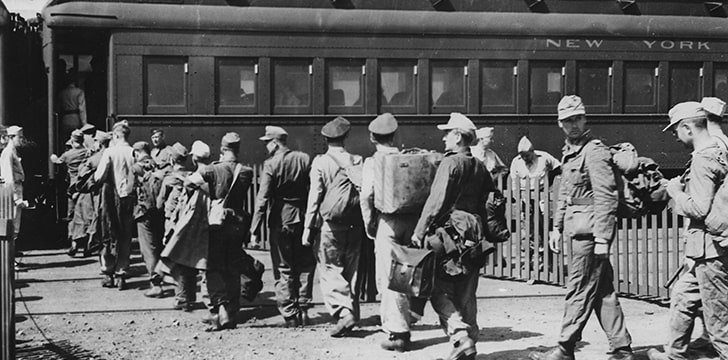
Bader was treated with great respect and admiration by his German captors.
He was visited quite often by Luftwaffe General and ace pilot Adolf Galland, whom Bader had met and clashed with several times in the air.
Galland wrote to the RAF, offering them safe passage into German-held territory if they would drop a replacement prosthetic leg for Bader.
Hermann Göring himself, head of the Luftwaffe, personally authorized this.
The RAF initiated what was called “Leg Operation,” in which an RAF bomber dropped a new leg for Bader on a parachute into St Omer, a Luftwaffe-occupied airbase in France.
At the end of the war, Bader went on to repay this kindness to Hans-Ulrich Rudel, a fellow amputee, when he arrived in Britain as a Luftwaffe prisoner of war.
With his new prosthetic leg fitted, Bader made it his personal mission to be a thorn in the side of his very accommodating captors.
He attempted to escape several times, despite constantly being caught until the Germans threatened to take away his legs.
In August 1942, Bader was transferred to the “escape-proof” Colditz Caste, where he spent the rest of the war until its liberation by the Americans in April 1945.
A Well-Earned Peaceful Life
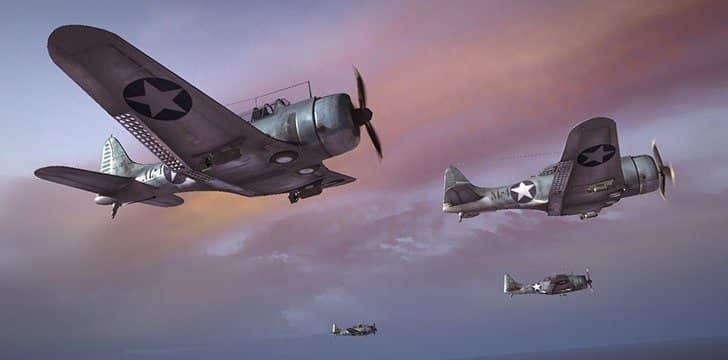
After the war, Bader continued to serve in the RAF for a short time, before leaving permanently in 1946.
He resumed his career at Shell and lived out a peaceful life with his wife Thelma.
Throughout his civilian life Bader campaigned for disabled rights and was awarded with a Knight Bachelor in the Queen’s Birthday Honors of 1976 “for services to disabled people.”
Bader would also to continue flying up until the age of 69, when he had to stop due to ill-health.
Douglas Bader passed away in 1982, aged 72, after suffering a heart attack. After living such an eventful and colorful life in his youth, Bader was able to lead a peaceful life after the war.
